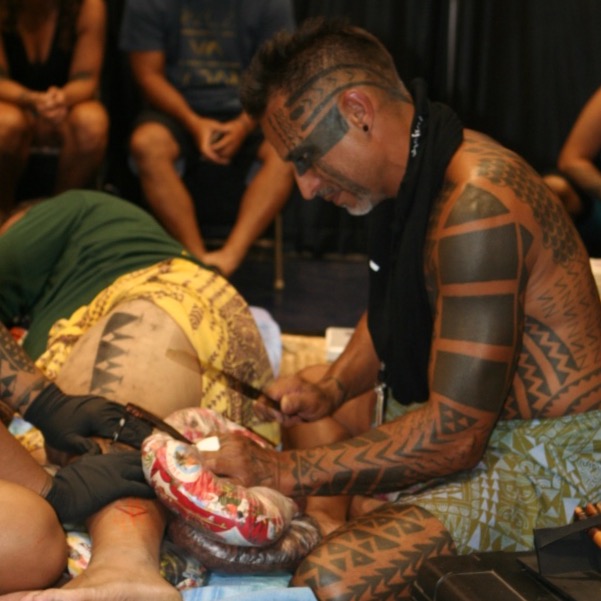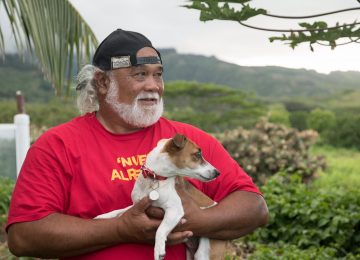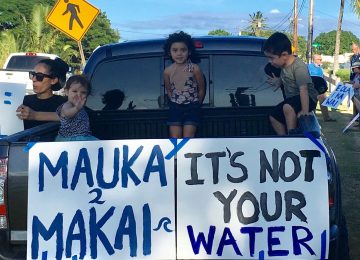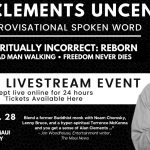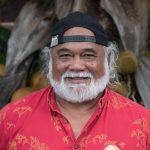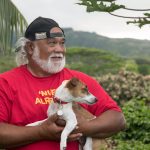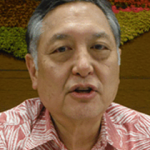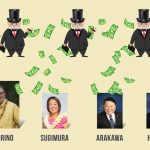The ancient, nearly lost art of Hawaiian tattoo, or uhi, uses tools that were developed in Polynesia 2,000 years ago. The practice is being resurrected in Hawai‘i by Kā Uhi master practitioner Keone Nunes, who appeared recently at the Pacific Ink & Art Expo in Lahaina, Maui.
Nunes resurrected this indigenous practice from the depths of his and his ancestor’s recessed memory. His calling has fueled an energized renaissance, with many students eager to study under his expert supervision.
This black inked tradition is intense to observe, the ancient designed hand tapping tools in motion and the rhythmic sounds brings senses to awe.
This traditional Hawaiian kākau work (the art of tattooing) performed only by men, is inspiring men and women of all races. (Indeed, the English word tattoo is derived from Captain James Cook’s 1769 report on the Polynesian and Hawaiian traditions he witnessed in the Pacific islands.) Many who embark on the journey of receiving their uhi (tattoo) have deep and meaningful reasons, among them a declaration of present day kuleana (responsibility).
Uhi is a sacred communion between an ancient past, the present, and future. It is received through a conscious connection to the deepest parts of mindful contemplation and demands a centered tie to ancestral direction. This traditional approach prepares the Kahuna (practitioner) to choose uniquely personal genealogical image representations.
In some cases, those who inquire are not ready to receive this sacred induction. The practice involves no more or no less discomfort than contemporary machine tattoo work. It does involves a special language of meditation, conversation and concentration, and it is appearing to be an evolving awakening for Hawai‘i, the people, the place as one.
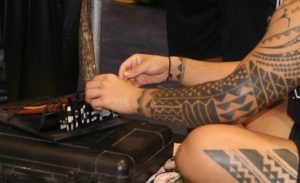
The passage to ‘ūniki (graduate) is a complex mixture of spiritual attunement with resolute understanding of kuleana (responsibility) as a kanaka (human). One must skill the steady of a hand tool driven by the spirit of the mōlī (the tool used in kākau uhi). It is this fine balance of heart and mind that translates such important balanced ink impressions.
The Uhi tool designs have their own amazing Polynesian genealogy that goes back two thousand years. Nunes earned the right to use these by Samoan master tatooist Sulu‘ape Paulo.
Nunes recently conducted a histoiric ‘ūniki ceremony to name Hawaiian Keli‘i Makua, who has studied the craft for 26 years, as the first Uhi master, or Kahuna Kā Uhi, to receive this honor in 200 years.
In symbiotic perfection, Nunes and Makua sat back to back at the recent Pacific Ink & Art Expo in Lahaina, Maui. They mesmerized those passing by. This unique event, never before presented on Maui, inspired many.
The tapping sounds of the hahau (the tapping tool used in kākau uhi), now multiplied, provides a strong sound path for a purposed-driven people. It is evident that people need to talk, to share each others contemplating and declare commitment to act on kuleana. For some this results in a well-defined uhi that, like a well-composed prayer, can be reverently returned to.
This intrinsic approach to tattoo lured many, both those painted and those unadorned. A Moloka’i man came to the Expo, observed, and made introduction, which led him to arranging an appointment with Makua in July.
One needs to plan well in advance as in depth communication with the uhi master may take four times as much as the actual kakua work.
As receivers are physically and spiritually connected to the uhi, the Kahuna acts as the conduit to ho‘omana (empower) that receiver. Ancestral relationships are restored and strengthened throughout the receiving journey of the uhi, reportedly bringing a balance of life flow.
Present day Hawai‘i culture demands reexamination of decisions, partnerships, futures and shapes of actions based on kuleana. Uhi and its importance in Hawai“i’s landscape reveals a fierce force that is ethereally stabilizing. Perfect timing or prophecy, Hawai‘i’s consciousness is evolving exponentially and the sacred practice of uhi brings that dedicated kuleana into view. Hawai‘i beholds strong traditions and you can sometimes learn someone’s story by a mere glance of the strong inked language of uhi.
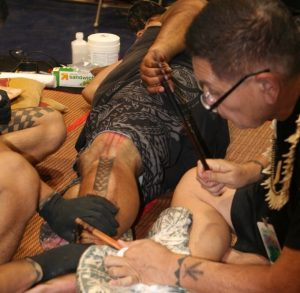
Photos by Faith Ewbank


